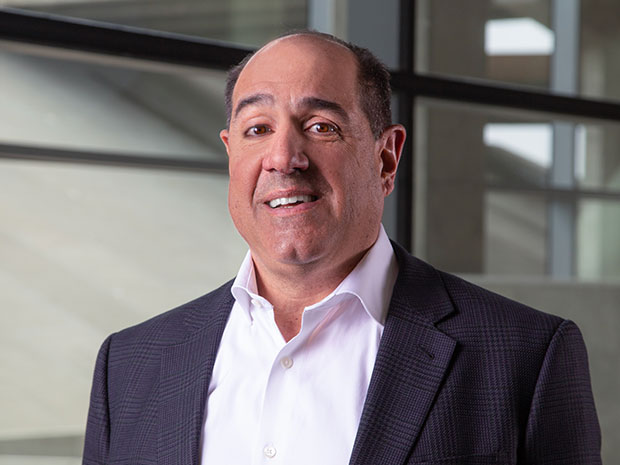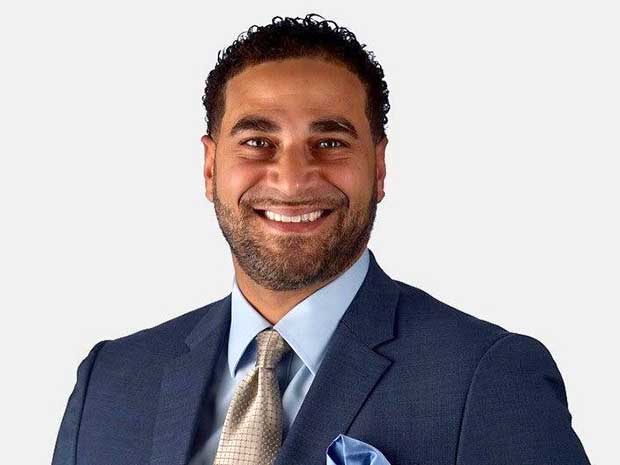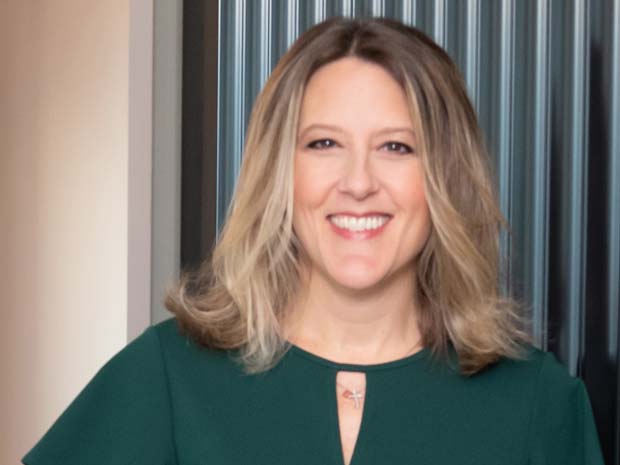Thank you for accessing the report!
This special report on corporate funding from the RSM US Middle Market Business Index provides unique insights into relevant middle market industry trends.
Thank you for accessing the report!
This special report on corporate funding from the RSM US Middle Market Business Index provides unique insights into relevant middle market industry trends.
As the era of easy money and low-cost financing ends, middle market businesses are facing a reckoning.
Rising real interest rates are pushing up the cost of commercial and industrial loans, making it harder for these firms to meet payrolls and finance their expansion, according to a new survey from RSM US LLP.
The result is a risk to economic growth across the real economy and, potentially, a recession.
Nearly three-quarters, or 74%, of senior executives at firms that replied to special questions from an RSM US Middle Market Business Index survey taken in July anticipate an increase in interest rates in the coming months. The overwhelming majority, or 82%, said that rising rates would have anything from a minor to a critical impact on their operations.
The MMBI survey aggregated the responses of 416 senior executives across a range of middle market companies and was conducted by The Harris Poll for RSM from July 5 to July 25, 2023.
Indeed, the Federal Reserve increased its policy rate in late July, soon after the survey was conducted. Then in September the Fed hinted at another increase after holding rates steady.
Since then, the yield on the benchmark 10-year Treasury has moved steadily higher, trading as high as 4.9% in October, the highest level since 2007. Before the pandemic, in the low-for-long era, that rate hovered between 2% and 3%.
“The increasing cost of doing business through higher rates is leading to a greater sense of risk across the middle market and the economy,” said Joe Brusuelas, RSM’s chief economist.

The increasing cost of doing business through higher rates is leading to a greater sense of risk across the middle market and the economy.
And the risk is heightened, paradoxically, as inflation falls.
“One of the particular challenges during this cycle is that as inflation eases, real interest rates increase,” Brusuelas added. “And that creates a situation in which commercial and industrial loans used to meet payroll and finance expansion are much more expensive on top of tighter lending by the commercial banks.”
For a generation of executives who came of age during the era of historically low interest rates, this is an altogether new challenge.
“Before the Fed’s interest rate campaign, you could borrow at fairly low interest rates, and you could make a bet on five different strategies,” said Mike Graziano, a director in RSM's national transaction advisory services practice. “Now, you can’t do that. You need to pick one. Many executives are not used to that.”

Before the Fed’s interest rate campaign, you could borrow at fairly low interest rates, and you could make a bet on five different strategies. Now, you can’t do that. You need to pick one.
The squeeze is coming from multiple angles. With real interest rising as inflation falls, the Federal Reserve is compelled to focus on stabilizing those real rates in the near to medium term.
Middle market firms that depend upon leverage will face a growing cost of doing business.
Federal Reserve Chairman Jerome Powell, in September, made it clear that he is keenly aware of this dynamic: “Higher interest rates also appear to be weighing on business fixed investment,” he said.
No matter the industry, financing costs are surging.
The rising loan costs are hitting the middle market. The survey found that firms defined as the middle market, or those with annual revenues from $10 million to $1 billion, now pay anywhere from 10.9% to 15.5% for financing. Such rates are pushing the risk premiums on loans close to double digits—a dynamic that was hard to imagine even two years ago.
It’s hitting the smaller end of the middle market in particular. About a third, or 34%, of smaller middle market firms, or those with $10 million to $50 million in annual revenues, have loans from commercial banks paying below 5%, and 24% have loans between 5% and 7%. Those loans will have to be rolled over in the coming years at higher rates, which poses an additional threat to cash flow.
Not surprisingly, lending has tightened notably in recent months, as reported in the Federal Reserve’s July 2023 Senior Loan Officer Opinion Survey. As a result, middle market firms needing cash are casting a wider net for financing and looking to the shadow banking sector.
More than half, or 56%, of organizations in the RSM survey sought traditional bank lending over the previous 12 months. In a similar RSM survey in 2015, that figure was 74%.
At the same time, more than a third of the companies surveyed, or 36%, have turned to the shadow banking market, 33% to equity sources such as private equity, 30% to digital banking and financing sources, 29% to government lending and a whopping 60% to private lending, meaning personal sources like savings or credit cards. Roughly 39% reported using retained earnings and cash to meet financial requirements.
All of these figures, representing capital providers other than commercial banks, are higher by a statistically significant margin than eight years ago in a similar RSM survey.
But that does not mean the trend is necessarily here to stay.
“My sense is that the shift away from commercial banks is not permanent,” Brusuelas said. “Rather, it is a function of the unique conditions following the series of shocks associated with the pandemic and supply chains, turmoil among midsize banks in the spring, global constraints on the supply of energy, and the lagged impact of the Fed’s policies to restore price stability.”
With inflation receding, he added, lending should begin to migrate back to commercial lending over the next year.
A perfect storm of inflation, rising interest costs, and an unfavorable change in tax rules governing deductions of interest expense is reducing the deductibility of interest for businesses.
Our comprehensive Guide to accounting for debt modifications and restructurings addresses the borrower’s accounting for the modification, restructuring or exchange of a loan under Topic 470, Debt, of the Financial Accounting Standards Board’s (FASB) Accounting Standards Codification.
The financing challenge is being felt across industries, from consumer products and manufacturing to life sciences and private equity.
Take consumer products companies. During the pandemic, their biggest challenge was simply keeping up with demand for goods as consumers ramped up their spending.
But now, spending has shifted toward services, leaving the makers of everything from apparel to foodstuffs bloated with inventory. Facing a period of retrenchment, these companies find they can no longer afford to pursue multiple growth strategies at once.
“Now, you have to do the work and analysis, and determine a single strategy that will generate the most immediate and sustainable return on investment,” Graziano said.
And when they do pick a strategy, companies must look further afield to secure the financing.
At least one-third of survey participants appeared to be moving into nontraditional bank lending, which does not have the same regulatory framework and safety net as traditional banks. As a result, the higher premiums attached to such lending are a further sign of substantial financial stress affecting the real economy.
One executive in the transportation logistics industry was blunt in discussing commercial banks in the RSM survey: “They are no longer willing to provide me with the same level of financing they once did.”
Our survey data illustrates the rising financial stress. For firms that need to finance payroll and business expansion through traditional bank lending, the overall rate is 10.9%, with those businesses in the smaller annual revenue bucket facing a mean average 7.7% rate and firms in the larger revenue bucket at 13.2%.
Overall, 21% of middle market businesses surveyed now pay less than 5% on their existing loans taken from commercial banks, and 22% are paying 5% to 7%, implying substantial reset risk and diminished cash flows as those loans are refinanced in the coming years.
Companies using nontraditional lenders pay a mean average annual percentage rate of 13.7%, with those in the larger revenue category paying 14.7% and smaller middle market firms paying 10.5%.
Organizations that have turned to digital bank and finance sources of liquidity pay an average mean APR of 12.3%, with smaller firms facing a 15.3% rate and larger firms at 11.4%.
Not surprisingly, the result of rising rates is more reluctance to borrow.
More than half of executives, or 53%, agreed with the statement that they would be less likely to obtain financing from a commercial bank than in the past. In a similar survey in 2015, that figure was 29%. This is taking place even as the survey found that of those middle market firms that continued to work with commercial banks, 70% reported a strengthened relationship.
But fueling the shift to digital banking, at least among those executives who cited a weaker relationship with a commercial bank, was the practical matter of embracing new technologies.
“Our business bank has been late to embrace current innovations and give easy-to-use advanced stages,” one manufacturing executive wrote.
But there is a cost to moving away from traditional banking. For those businesses that turn to equity sources of lending such as private equity, the mean average APR is 15.5%, with the larger revenue firms paying 17.0% and lower-revenue companies paying approximately 8.8%. This does not include warrants or any conditionality attached to such private lending sources.
Those using government sources pay a mean average of 11.4%, with smaller firms paying 5.7% and larger firms paying 13.1%.
Those businesses that use credit card financing face an average of 15.0%, with smaller firms paying 13.6% and 15.3% on average.
No matter the industry, financing costs are surging.
Nowhere has the impact of rising real interest rates been more pronounced than in the private equity ecosystem.
For an industry that relies on financing, it’s hardly surprising that firms are having to adjust in the face of sharply higher capital costs.
Don Lipari, the industry and private equity leader for RSM, said that private equity firms are paying four and five times the rates of 18 to 24 months ago to leverage the capital that they have. Deals, as a result, have become much harder to close.
“The current lending environment puts tremendous pressure on sponsors to ensure the deals they close are the right deals,” he said. Otherwise, he added, sponsors risk disappointing their limited partners down the line.

"The current lending environment puts tremendous pressure on sponsors to ensure the deals they close are the right deals." Otherwise, he added, sponsors risk disappointing their limited partners down the line.
A recent RSM US Middle Market Business Index survey of senior executives found that rising interest rates are imposing a higher cost of financing on companies.
“That increase in real interest rates is particularly painful for private equity firms that rely on leverage to make deals,” said Joe Brusuelas, RSM chief economist.
Over the past decade, Brusuelas said, long-term real rates, using 10-year Treasury Inflation-Protected Securities as the benchmark, have averaged 0.26% compared with rates that have exceeded 2% this fall.
This all has an unmistakable effect on dealmaking, the lifeblood of the industry.
“The pace of dealmaking has definitely slowed,” said Kennedy Chinyamutangira, a senior manager in RSM’s audit practice with a focus on hedge funds and private equity funds. “Private equity firms are being a lot more thoughtful in the way they apply leverage and debt financing in deals.”
This shift doesn’t mean that the market is dead. But it does mean that private equity firms, and companies in the industries they serve, have to adapt to a changed financing environment.
The trend is playing out in the consumer products industry.
“There is more scrutiny on deals,” said Mike Graziano, a director in RSM's national transaction advisory services practice specializing in consumer products. “A couple of years ago, you could take a business that was underperforming, you could tell a story and get funding. That’s not happening anymore. Lenders want to see profitability before they put their dollars at risk.”
On the sell side, we are seeing a hurry-up-and-wait approach. Large deals are occurring, he said. But it’s the ones in the middle market that have a little bit of fleas on them that have to get shaken away—those are the ones that are taking more time to close.
A main reason it’s taking longer is that a gap in valuations that has emerged.
“The market went from a 10-year seller’s market to a buyer’s market in the span of a quarter,” Graziano said. “It’s taking time for sellers to understand this.”
Graziano gave the example of HVAC repair. It’s a fractured industry with many smaller operators that compete in the same geographic area. A private equity firm will look to consolidate these businesses with the goal of saving money on back-office functions while expanding product offerings.
But a lot of owners in the HVAC business know each other. When one of them sells to a private equity firm, the price gets out.
“When you know that your friends got a certain price two years ago, it’s hard for you to swallow 50% of that,” Graziano said.
At some point, he said, the market will adjust, as it always does. Sellers will have to come to terms with the lower price, or at the least change their deal structure with provisions like earnouts, or meeting certain financial thresholds.
“Ultimately, private equity needs to start thinking about operational excellence around acquisitions because they will have to hold their assets for longer,” Brusuelas said. “The basic assumptions around which private equity firms operated are in the process of changing.”
Another difference that has emerged as the industry adapts to a new environment is in the kind of deals being pursued.
“We saw a very quiet M&A market in the first and second quarters, but that is starting to pick up again,” said Karen Galivan, an RSM tax partner focused on consumer products. “But instead of large acquisitions, there are a lot of strategic smaller acquisitions to expand either footprint or market share.”
Through it all, buyers and sellers need to understand that higher real interest rates are not going away, Brusuelas said.
“It is essential that all who work in private equity or have exposure to that ecosystem understand that the zero-rate era that often featured real negative rates is over,” Brusuelas said.
Going forward, Brusuelas added, real rates are likely to float between 1% and 2% in an optimal environment. Firms need to be prepared for higher rates.
Even with these headwinds of higher rates, Lipari expressed confidence that private equity firms could navigate a challenging environment. “My money is with the sponsors,” he said.
Manufacturers have faced a host of challenges in recent years, starting with the tariff wars and continuing through the shocks of the pandemic.
But the new regime of higher interest rates imposed by the Federal Reserve has presented an altogether different challenge.
With the Fed having increased its policy rate over the past 18 months to the highest level in 22 years, manufacturers, like other businesses, are paying more for financing as they seek to make investments that will keep them competitive.
In the short term, it’s a significant challenge.
“Firms that did not lock in long-term rates, or even medium-term rates, are experiencing significant increases in debt-service costs,” said Jason Alexander, enterprise leader for RSM’s industrials practice. “A lot of companies are finding that loan terms are a lot more restrictive and unfavorable than they were in the past.”

Firms that did not lock in long-term rates, or even medium-term rates, are experiencing significant increases in debt-service costs.
A recent RSM US Middle Market Business Index survey of senior executives found that across industries, including manufacturing, rising financing costs are making it harder for businesses to meet payroll or finance new projects.
The new environment has come as quite a shock to those executives who have not had to deal with a high-interest rate environment in the past. As a result, executives are having to pivot their strategies to emphasize the operational end of the business.
“A lot of companies are having to focus on working capital and looking at margins and cash flow in a more granular way,” Alexander said. “In the past, when money wasn’t costing as much as it is now, and you could borrow in the short term to cover expenses, you had a lot more flexibility.”
That flexibility is gone now. So executives have to be more selective in pursuing longer-term investments.
This is not to say that manufacturers do not have options that can help them work through this period. Alexander gave three examples:
All of these initiatives require money, and that’s where the higher cost of capital has started to take a bite. To secure this financing, companies are looking beyond traditional banks.
“There is a growing private credit market where private equity and nontraditional lending sources have stepped in, especially where commercial banks have backed off,” Alexander said. “In a lot of cases, that financing is significantly more expensive.”
The RSM survey asked middle market executives across industries what annual percentage rate their organization had paid over the past 12 months. For loans from commercial banks, companies were paying a mean average of 10.9%. For nonbank lenders, that rate was 13.7%. For equity sources, which include private equity, venture capital and mezzanine financing, that rate was 15.5%.
For many manufacturing firms, the playbook of three years ago, when low-rate loans were available, no longer works. In the end, manufacturers will continue to invest, but the cost of those investments has gone up—along with the price of being wrong.
Two years ago, amid the pandemic lockdown, consumer products companies faced the unusual challenge of securing enough goods to meet surging demand. Supply chains were broken, and companies scrambled to meet demand.
Today, these firms face a different challenge, according to the RSM US Middle Market Business Index survey for the third quarter.
With consumer spending shifting to services, and away from goods, firms are having to reduce inventories amid a slowing economy just as financing costs are surging.
Major retailers identified this shift to services in the summer of 2022, and they scaled back their purchasing, said Mike Graziano, a director in RSM's national transaction advisory services practice specializing in consumer products. Inventories, they realized, needed to get to a more sustainable level.
For the middle market wholesalers selling into the big box retailers, it was a radical change.
As a result, executives face tough choices as they try to identify the best investments. It’s no easy task amid the whipsaw change in technology and the economy. In 2022, the metaverse was the must-have technology that would drive growth. Then, seemingly overnight, the focus was artificial intelligence. All the while, businesses are now actively rethinking their supply chains, and shifting away from China.
That leaves the question: Where does a company invest?
“In 2018, you probably could have taken out a loan and invested in all three,” Graziano said, “but today you can’t.”
It’s all part of the squeeze hitting middle market businesses, according to RSM’s survey. Senior executives across industries said they were paying more to secure financing, and that was limiting their ability to invest in the future.
Metaverse? AI? Supply chains? Today, it’s pick one.
The change has reined in expectations, said Karen Galivan, an RSM tax partner focused on consumer products.
“When we talk about technology in the middle market, it’s important for executives to remember that they don’t need the Cadillac solution, but they need a trustworthy and adaptable solution,” she said.

When we talk about technology in the middle market, it’s important for executives to remember that they don’t need the Cadillac solution, but they need a trustworthy and adaptable solution.
Then there is the more urgent matter for some businesses of simply keeping the lights on.
During the pandemic, some companies were propped up by the robust spending and the surging demand for goods. Today, that support is fading, and executives are struggling to identify the area that will best position them over the long term.
Companies cannot just plan for the next six months; they have to plan for the next six years. But when lending costs are as high as they are, it makes strategic decisions harder.
The role of commercial banks as first-choice lenders has eroded, the survey found. Not only are they having a harder time keeping up with technological advances, frustrating some businesses, but they are also being more selective in the companies they lend to, as the Fed survey of loan officers found.
It can be a frustrating time for middle market businesses.
“The bank's communication regarding interest rates and changes in policies is often unclear or delayed, making it difficult for us to plan and manage our finances effectively,” one executive in the retail trade said in the survey.
In the end, the new environment is taking a toll on innovation, whether a company is going to invest in a new plant or a new line of products, Galivan said.
“I liken it to potato chips,” she said. Before the pandemic, she added, “there was always some crazy potato chip flavor that would come out. Today, companies are not doing that as much. It just costs too much.”
On top of this, Galivan said, the tax legislation around research and development have changed, and companies cannot immediately expense research and development costs anymore. You have to amortize those over five years in the United States, or 15 years for foreign operations.
One way they are innovating, she said, is through add-on acquisitions.
Ever since the Federal Reserve began raising interest rates last year and the markets cooled, life science companies that relied on abundant and low-cost financing are suddenly facing a radically changed environment.
A recent RSM US Middle Market Business Index survey of senior executives found that across industries, including life sciences and technology, rising financing costs are making it harder for businesses to manage their cash runway or finance new projects.
It’s a similar story in with technology startups that burn through significant amounts of cash as they pursue what can be moonshot strategies. While these firms face a risk of failure, the rewards can be significant when it works.
Today, as financial stress mounts, a split has emerged in the life sciences sector, said Adam Lohr, a senior analyst for life sciences at RSM.

Most life science companies burn cash for years as they move through trials and seek FDA approval. Higher rates, risk aversion and market volatility have made it a very difficult time for them.
In one camp are the more established companies that are on their way to commercialization and have a pathway toward profitability. In the other camp are the early-stage companies with significant cash requirements to develop their pipelines and bring innovations to market. Both face challenges.
“We keep talking about the easy money being gone,” Lohr said. “Most life science companies burn cash for years as they move through trials and seek FDA approval. Higher rates, risk aversion and market volatility have made it a very difficult time for them.”
These companies, which can have a 10-year runway to commercialization and even longer to profitability, are used to getting regular cash infusions from private investment or public offerings. That money just hasn’t been there following the pandemic. Now, for early-stage startups or those approaching commercialization, survival is more challenging.
The issue, for many, is simply staying in business: How do life science and technology startups keep moving their core technology forward while also managing their cash flow?
It can be done, Lohr said.
Early-stage companies, he said, raised a lot of cash during the pandemic at very high valuations. So there are still many that have a year or two of cash runway to pursue their next milestone. But that doesn’t mean they don’t feel the pressure.
To get through this phase, they need to conserve cash.
What’s not negotiable, he said, is skimping on the science. Everything else can give way to support the core mission of the business.
Outsourcing noncore business functions including information technology, human resources and finance divisions is often a viable solution. The goal, Lohr said, should be to support the company’s essential employees that have deep expertise in science or technological development to propel the company to the next phase of development.
Then there are the strategic partnerships. Companies can look to contract out research, clinical trials or their manufacturing, to focus more intently on their core innovation.
That’s because, at this point, the money isn’t available the way it was even two years ago. But the good news is that there are other ways that companies can extend their shelf life.
Lohr outlined three options:
Beyond these strategies, startups are now looking at flat or down round investments, in which a startup gains an investment at a valuation that is the same or lower than it was before.
And it’s a hard adjustment. For operators used to having a much higher valuation set during a more buoyant era, it can be difficult to realize that their business is worth less.
The real estate industry relies on consistency and predictability when it comes to financing transactions or new projects.
Over the past year and a half, as the Federal Reserve has increased interest rates to their highest level in decades, real estate companies have had to contend with a new environment of higher costs and greater uncertainty.
Their response has been to take more of a wait-and-see approach.
“We’ve seen a significant slowdown in transaction activity,” said Scott Helberg, a senior analyst in RSM’s Chicago-based national real estate industry practice.
Higher interest rates squeeze margins and reduce potential opportunities for being able to buy assets, he said.
In the end, the math has to work, and these days that has become more difficult, he said.
“If I told you that a real estate deal is offering a 3% return when a money market is paying 5%, there won’t be a deal,” he said. “Time and again, anecdotally from our client base, you could be looking at acquiring an asset, but when interest rates increase during the due diligence period, the economics may shift to kill a deal.”

Time and again, anecdotally from our client base, you could be looking at acquiring an asset, but when interest rates increase during the due diligence period, the economics may shift to kill a deal.
A recent RSM US Middle Market Business Index survey of senior executives found that across industries, including real estate, rising financing costs are making it harder for businesses to meet payroll or finance new projects.
Now, with commercial banks pulling back on their lending, real estate companies have had to become more creative in filling out their capital stack when they are looking to acquire an asset.
So they are looking to sources beyond commercial banks such as debt funds—private equity firms issuing their own debt to fill that gap—or mezzanine loans and preferred equity. These types of notes are secured by the borrower differently, often by the partnership and not by the property itself.
These alternative sources of capital also cost more for the borrower.
“That’s another reason you are seeing a squeeze on asset transactions,” Helberg said of the turn to alternative sources of financing.
But there are other factors at play in the decline in transaction activity.
On the seller side, there is a reluctance to recognize that property values have dropped as interest rates have increased.
“There is a gap between the bid and ask prices,” Helberg said.
It’s a dynamic playing out in other industries, where owners of companies are slower to realize that a company is worth less.
It will take time for this gap in valuations to narrow. The first step for buyers is to fully trust that the Federal Reserve is finished with its rate hike campaign.
That time may be approaching. RSM chief economist Joe Brusuelas has forecast that the Federal Reserve has reached, or is about to reach, the peak in its cycle of the rate increases.
As real interest rates rise and inflation falls, the cost of doing business increases, particularly in real estate. Brusuelas said that the priority for the Fed should be to remove some of that uncertainty.
“The direction of policy needs to focus on stabilizing those real rates,” Brusuelas said.
In the meantime, Helberg said, acquirers have become more selective in their deals and are getting more creative, whether it’s the type of property they are buying or the method of financing they use.
Streamlining the finance and accounting function can help middle market companies weather the environment of rising capital costs. Optimized finance and accounting departments can provide lenders with higher-quality data and better visibility into the business.
Utilizing an outsourcing model for some business functions provides middle market businesses with the flexibility to scale as demand dictates. This operational flexibility can also be seen as a plus in the eyes of lenders.
Firms that have relied upon low-cost leverage, sometimes at negative real rates, will face challenges in financing payroll and expansions as rates remain high compared to recent standards and real rates continue to increase.
Manufacturing, technology and life sciences firms will all likely face significant adjustment.
Private equity, in particular, will face challenges as the economic landscape shifts from one that supported the low-cost, high-leveraged risk-taking model for many years to a new environment of higher rates and higher cost of capital that now favors operational efficiencies and execution.
A zero-interest-rate policy can mask a wide array of operating inefficiencies in the real economy. An environment with higher rates and higher inflation, on the other hand, reveals them.
But there are ways to manage the disruption. The winners in private equity will be firms that can create enterprise value among their portfolio companies by focusing on operational expertise and optimized cash flows. The prior risk-seeking regime that sought balance sheet engineering and relied on debt maximization and deal structuring will, in contrast, face considerable headwinds.
The RSM US Middle Market Business Index survey data in the third quarter of 2023 was gleaned from a panel of 1500 executives (the Middle Market Leadership Council) recruited by The Harris Poll using a sample supplied by Dun & Bradstreet. All individuals qualified as full-time, executive-level decision-makers working across a broad range of industries (excluding public service administration): nonfinancial or financial services companies with annual revenues of $10 million to $1 billion and financial institutions with assets under management of $250 million to $10 billion.
These panel members have been invited to participate in four surveys over the course of a year that include special issues-based question sets, as well as monthly index-only surveys; the 2023 third-quarter survey was conducted from July 5 to July 25, 2023. Information was collected by phone and online survey from 416 executives, including 183 panel members and a sample of 233 online respondents. Data is weighted by industry.